When it comes to decking, there are many misconceptions that homeowners and builders alike may believe to be true. In this blog, we’ll be exploring and debunking eight of the most common myths surrounding decking. From misconceptions about material durability to maintenance requirements, we’ll provide you with the facts and information you need to make informed decisions when it comes to selecting and maintaining your decking. So let’s dive in and bust these myths wide open!
8 decking myths busted
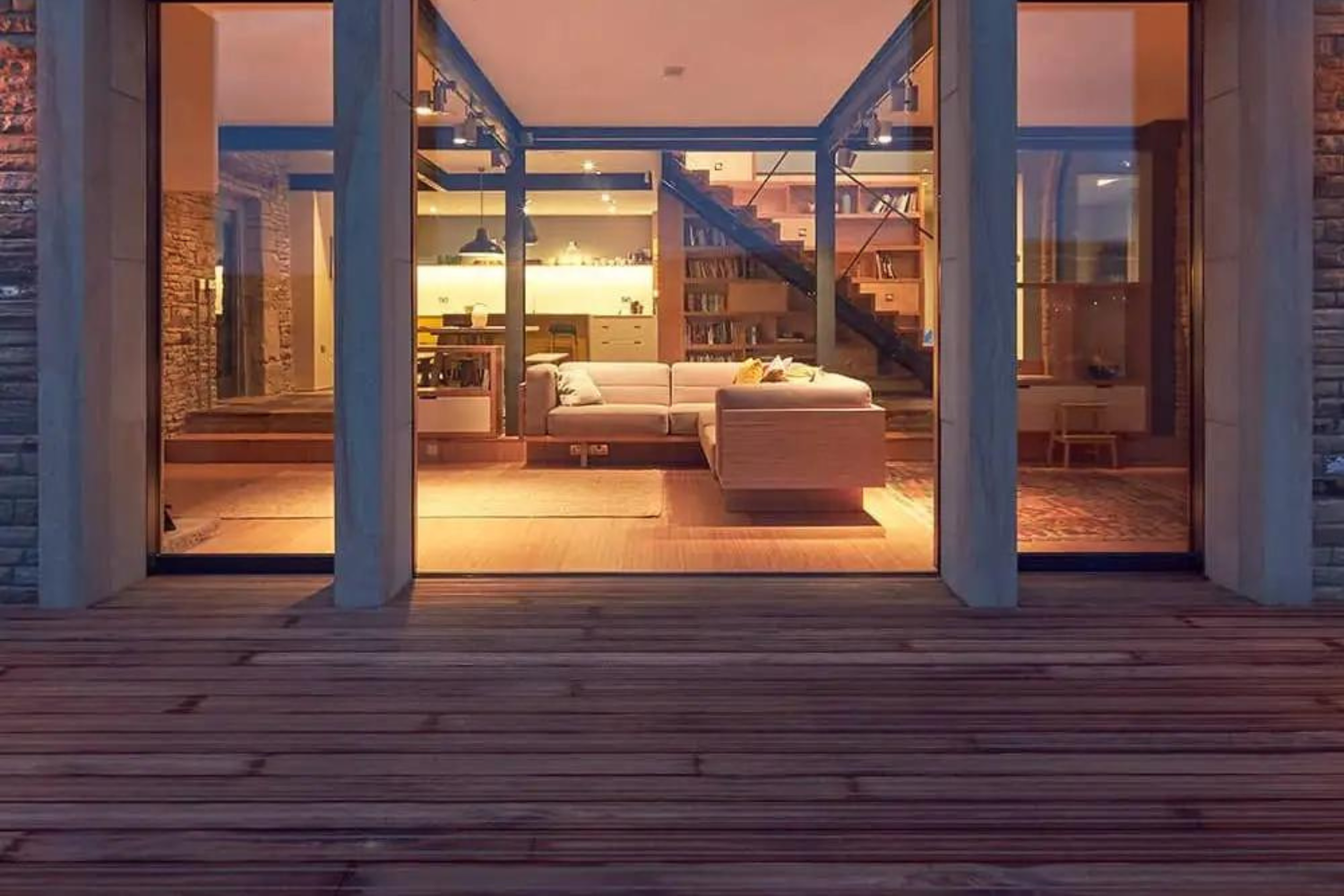
In this blog, we'll be exploring and debunking eight of the most common myths surrounding decking.
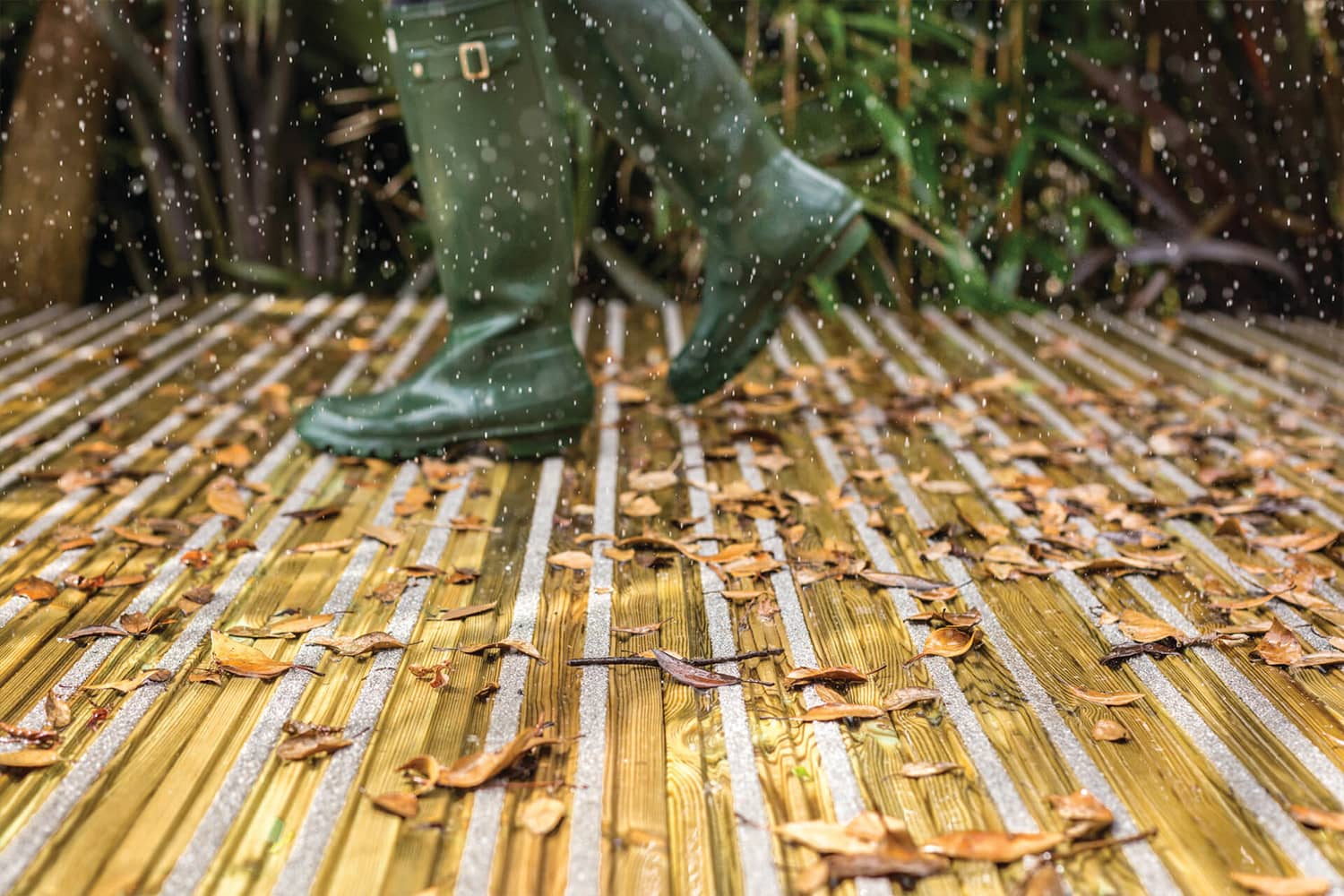
1. Decking is dangerously slippery when it's wet
This is both true and false, depending on the decking. Traditional timber and composite decking are notoriously slippery when it’s wet underfoot. This is especially true if algae and grime have built up. Fitted with aggregate or rubber inserts, non-slip timber decking stays safe all year round, even when in wet or icy weather.
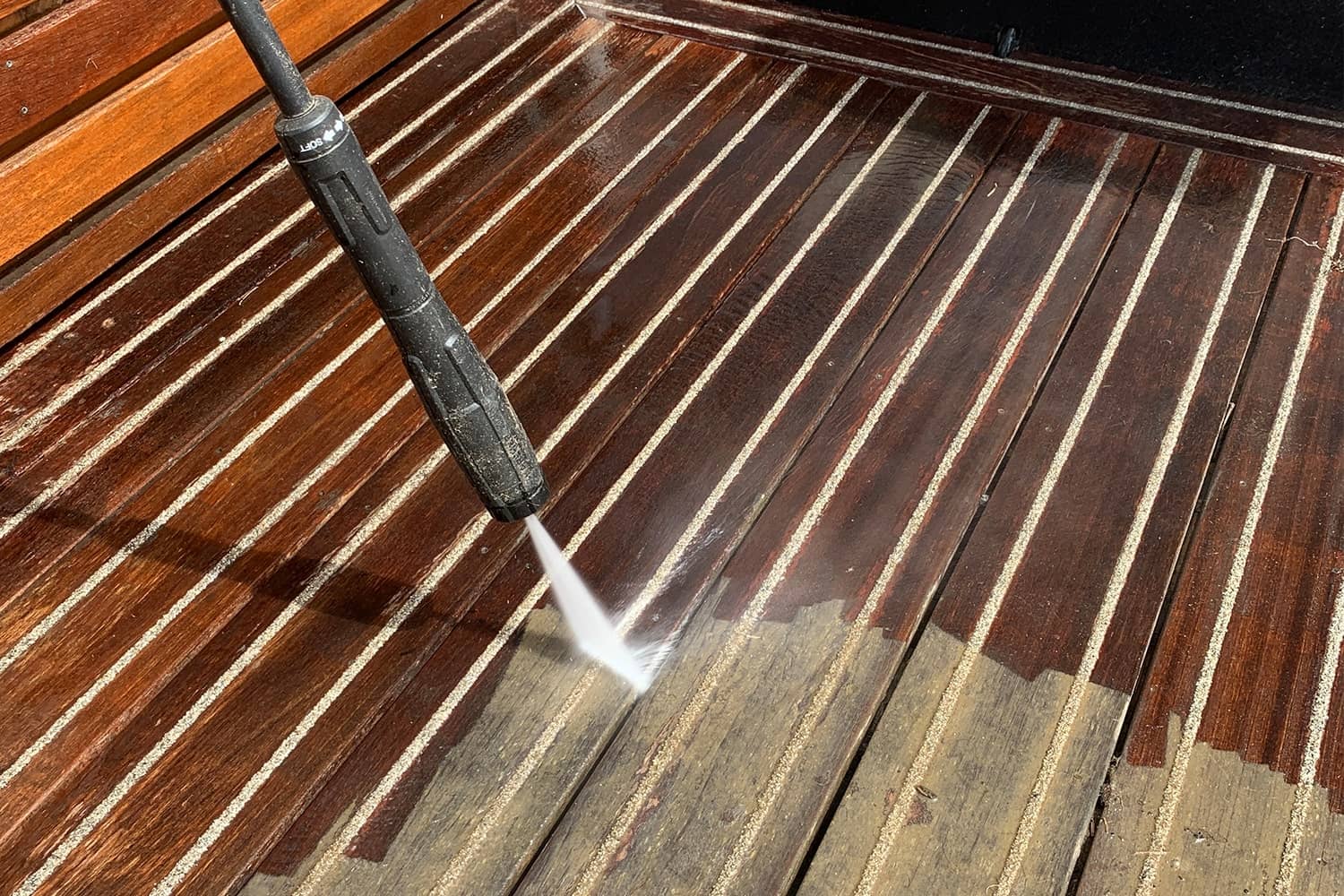
2. Timber decking requires too much maintenance
No decking is maintenance-free! If you install it correctly, your decking won’t require much maintenance to keep it looking good. Just a quick clean to prevent dirt or algae from building up should be enough.
All cut ends, drill holes and notches in pressure-treated softwood timber need to be treated with an end-grain preservative. This will protect the timber against fungal attacks. Both softwoods and hardwoods can be oiled to prevent the timber from weathering. This will also prevent the timber from natural weathering to a silvery grey.
Even composite decking fades in colour after about three months and will need painting or staining with specialist composite paint to restore its original colour.

3. Timber decking is damaging forests
Timber is a natural material that originates from a renewable source. More sustainable timber is coming from managed forests in Europe and Russia every year. Pine is a very popular choice of timber for softwood decking, and more sustainably-sourced hardwoods are available too.
Responsible decking suppliers will be FSC® certified and will be able to provide you with information to assure you that your decking has come from a sustainably managed timber forest. You can learn more about sustainably sourced timber and search for FSC certified products and suppliers here.
Some composite decking manufacturers use recycled materials, such as plastics and wood chippings. Others use virgin polymer materials, which are not environmentally friendly.
Unlike wood plastic composite decking, where plastic wood and additives are bound together and difficult to separate, wood is fully biodegradable. That means that when you remove a timber deck you can recycle it.
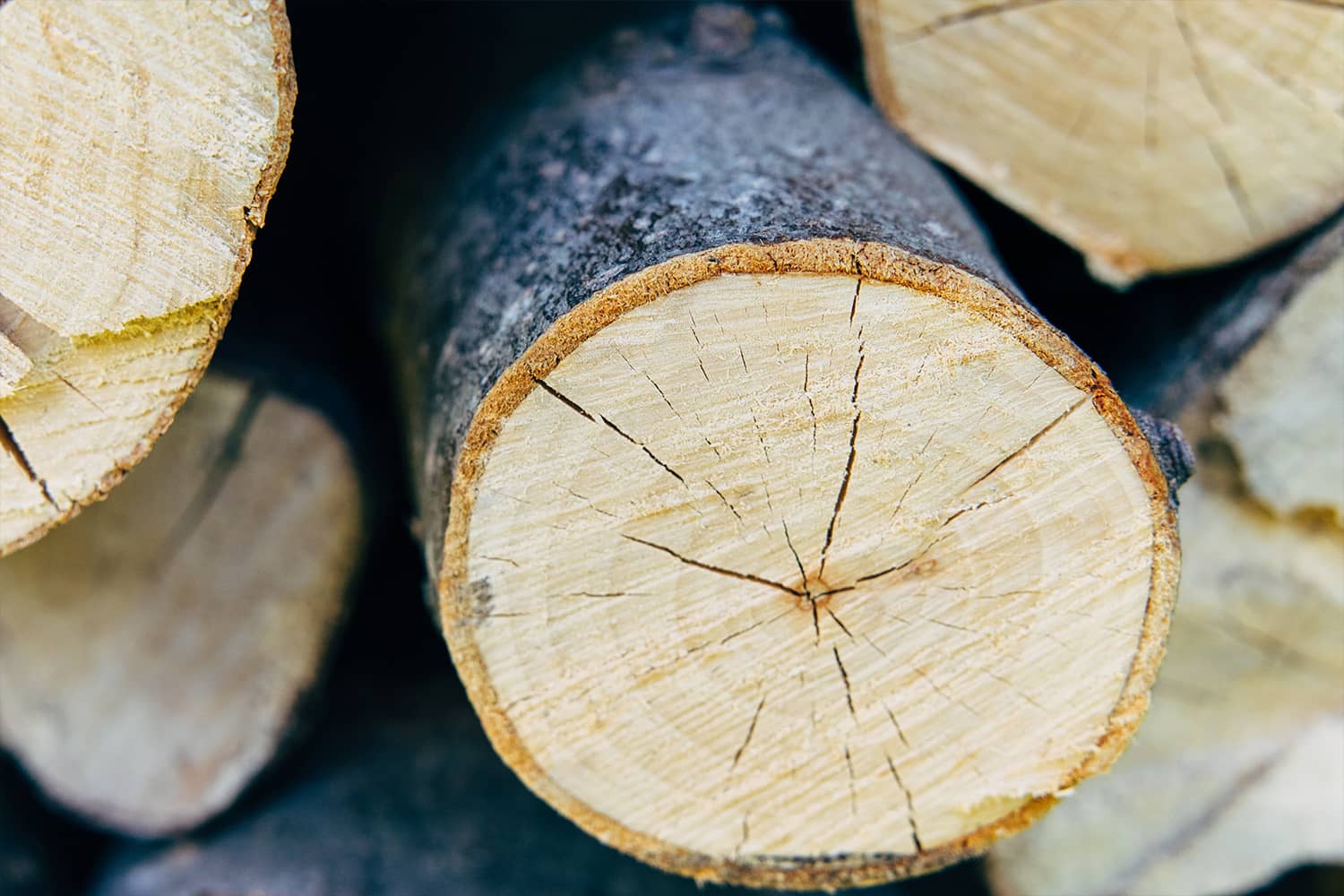
4. Durability is the same as strength
Durability should not be confused with strength. The durability of timber decking refers to the ability of wood to resist rot. It is rated using a durability class:
| Class rating | Class description |
|---|---|
| Class 5 | Non-durable (less than 5 years) |
| Class 4 | Slightly Durable (5 to 10 years) |
| Class 3 | Moderately Durable (10 to 15 years) |
| Class 2 | Durable (15 to 25 years) |
| Class 1 | Very Durable (25 years+) |
You can choose from naturally durable hardwoods, naturally durable softwoods, pressure-treated softwoods, thermally modified timber or chemically modified timber. The best choice will be dependent on where the decking will be used – a good decking manufacturer can advise on this.
The strength of timber is measured by strength grading, which depends on the species and grade of timber. The higher the number, the stronger the timber. Hardwoods range from D18 to D70, and C16, C18 and C24 are the most commonly available strength classes for softwood. C16 is considered the minimum standard for softwood decks above 600mm in height. The higher strength classes should be used where longer spans or commercial deck performance is needed.
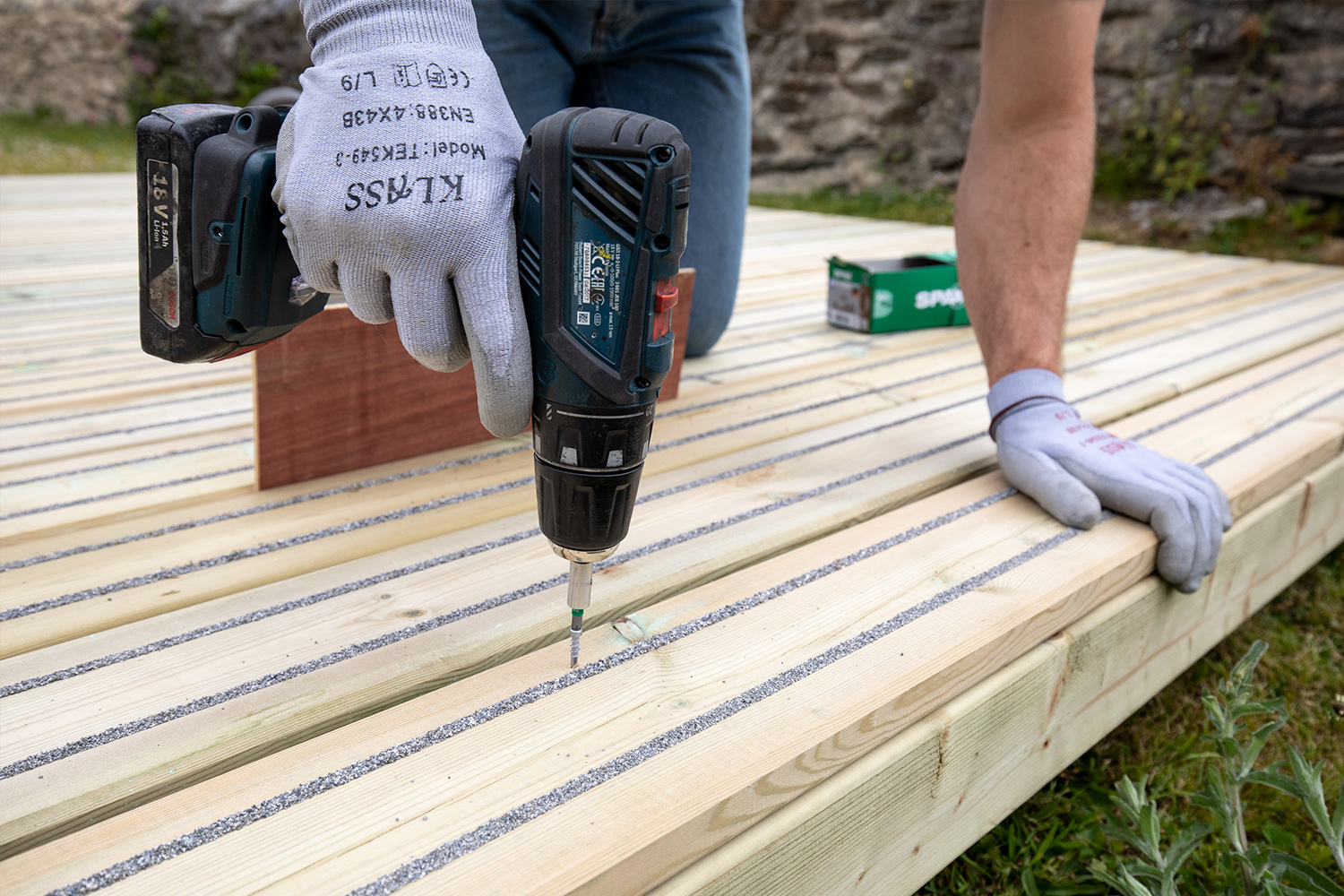
5. Grooved decking should be fitted face down
There is a growing preference to fit deck boards grooved side down with the reeded or smooth side facing up. It is entirely up to you whether you lay the boards grooved side up or down but, there are a few things you should bear in mind.
Deck boards with grooves are designed to channel water away from the deck. To help with drainage, they should be fitted with a slight tilt in the direction of the grooves.
Some people choose to put the grooved or reeded side face down to allow for airflow underneath the boards to prevent a build up of moisture.
Reeded decking boards can improve grip underfoot but are not slip-resistant. Choosing decking with anti-slip inserts is the only way to guarantee enough grip to prevent slipping on wet decking.
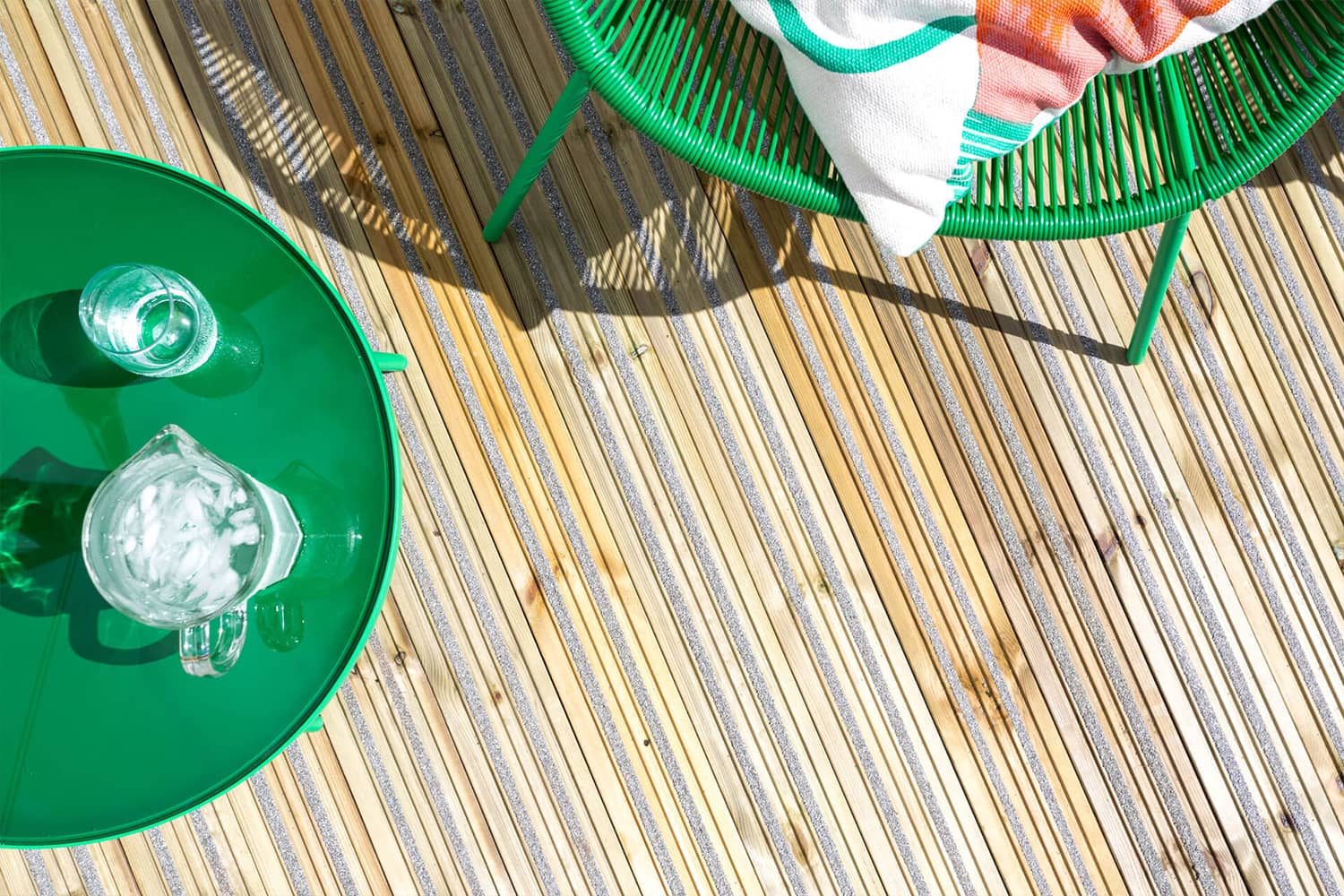
6. Grooved deck boards are best
There is no single best deck board. It all comes down to where the boards are being fitted and how will they be used. The benefit of grooved boards is that they aid water runoff but only if the boards are fitted with a slight fall and in short lengths. Due to surface tension properties water will sit on a board longer than 3.6m in which case it is much better to use a smooth board.
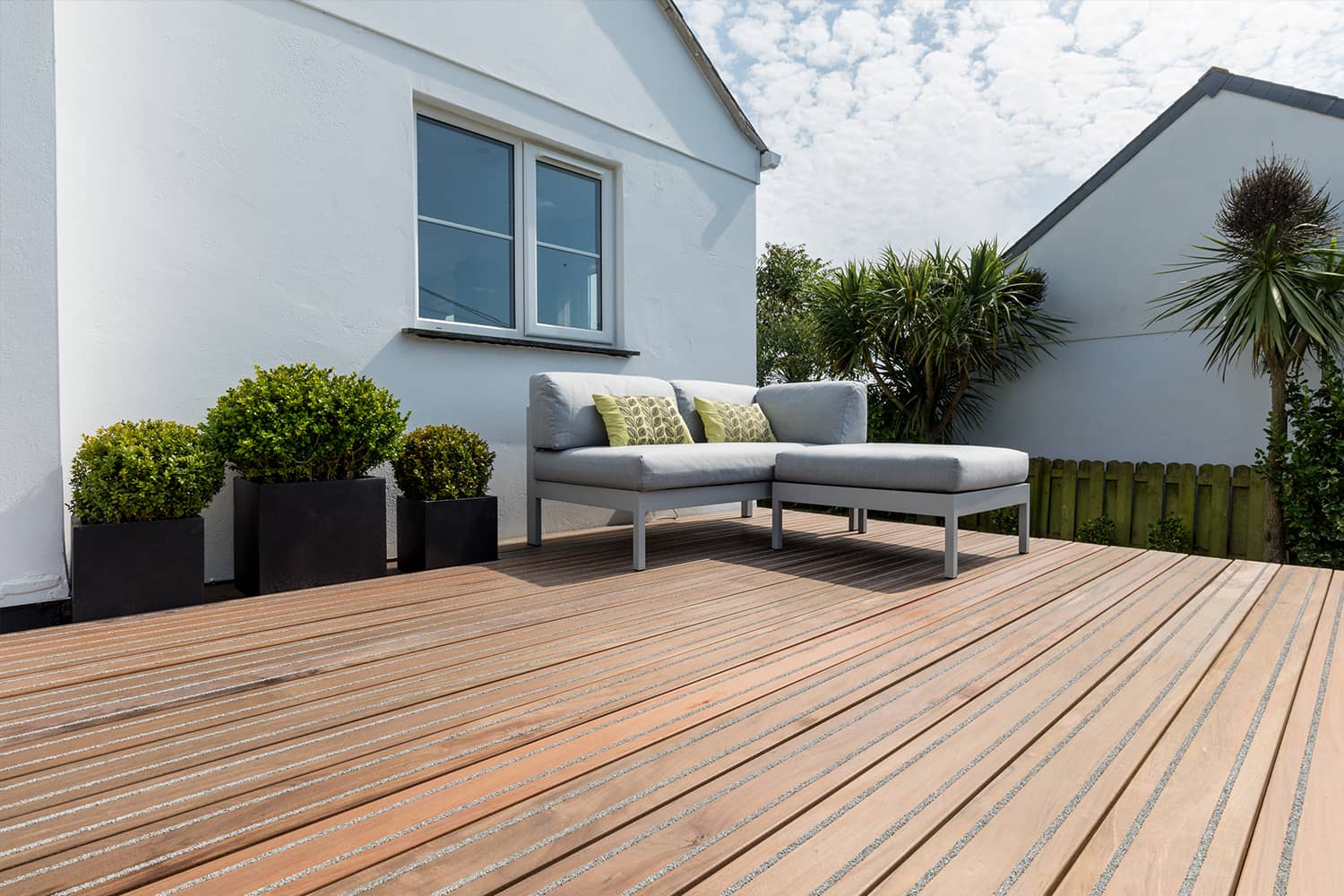
7. Hardwood decking is hard to install
Hardwood is no more difficult to install than softwood decking. By pre-drilling fixing holes, or with the assistance of self-drilling screws and the option of hidden fasteners, installing hardwood decking is quicker and easier than in previous years. It’s always best to ask your supplier for advice on how to install your hardwood decking.
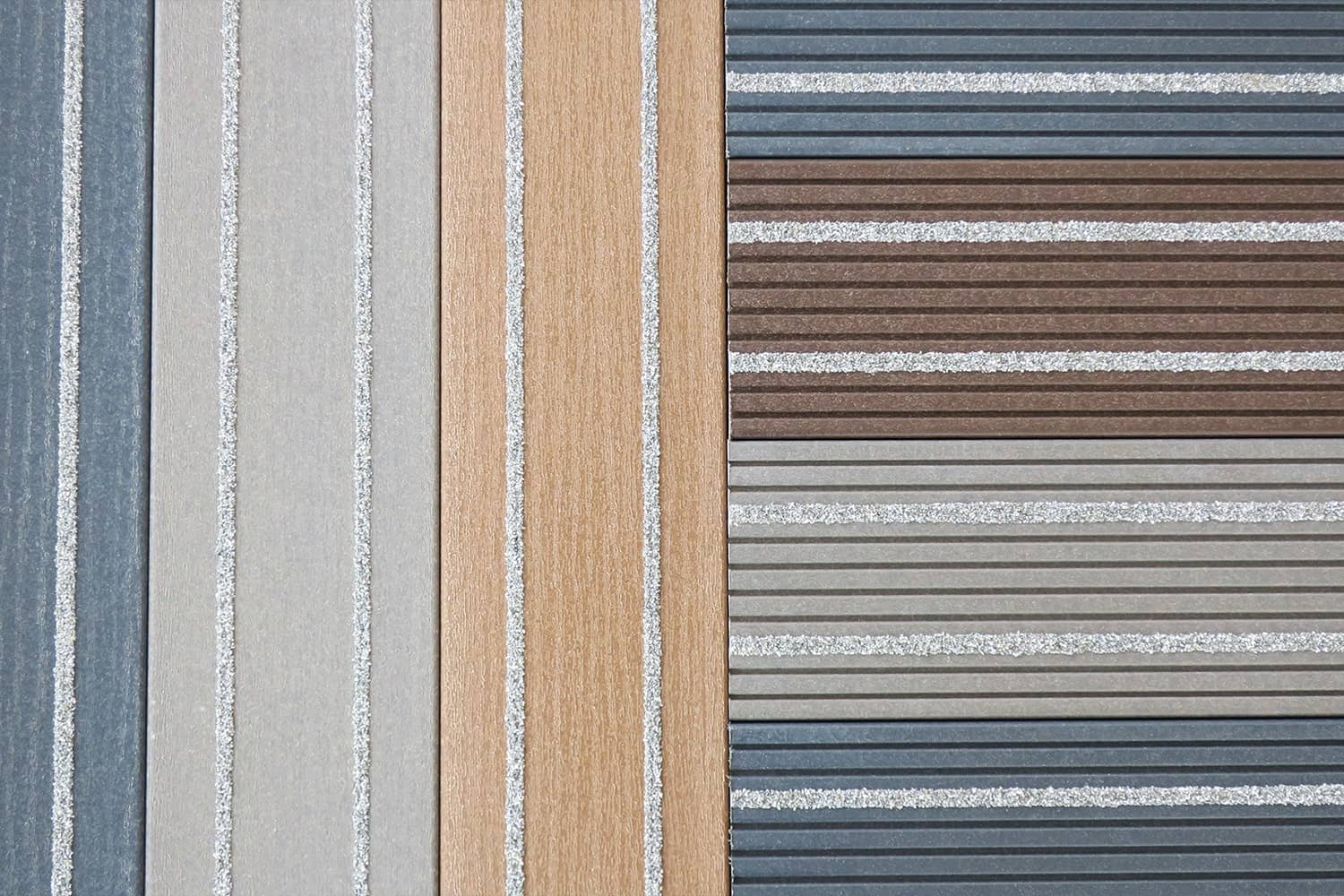
8. Composite decking is maintenance free
Unfortunately, no decking is maintenance-free – whether it’s made from solid timber, plastic, steel or mixed materials. Any surface will develop unwanted grime if it’s exposed to moisture. Decking can get especially slippery in damp environments. Even with a build-up of algae, anti-slip decking will remain slip-resistant. However, we would still recommend cleaning non-slip decking to keep it looking its best.
Get in touch
If you have any questions or would like more information, get in touch with one of our friendly team.